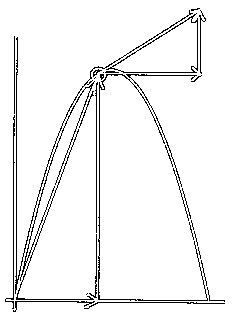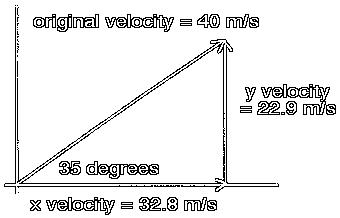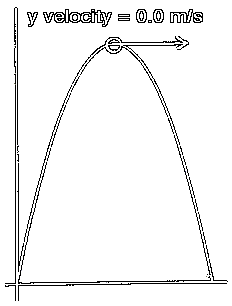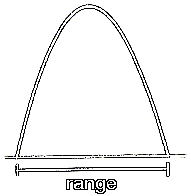 |
| Projectile Motion |
A general summary of solving projectile motion problems, finding the usual things (Range, Height, hang time), without regard of air resistance.
Since all these problems occur on Earth, the acceleration of all the problems will be the gravity (-9.8m/s2)
However, gravity will only affect the vertical-y component, therefore the acceleration of horizontal speed is 0 - constant velocity (v1x = v2x = vx)
Components of original velocity:
Using basic trignometry, we can calculate x and y components when given the inital velocity and angle.
X component of original velocity: vx1 = v cos(θ)
Y component of original velocity: vy1 = v sin(θ)
Height:
At its maximum height, Vy becomes 0
Given vy2 = 0, vy1 = V1 sin θ, ay = -9.8m/s2
v22=v12+2ad
v22=v12+2aH
0=v12-2gH
H=v12/2g
Hang Time: After finding out V1x and V1y with trignometry, we know that the displacment vertically is 0 after the total time.
Given : dy = 0, ay = -g
d = v1t + 0.5at2
0 = v1yt + 0.5(-g)t2
v1yt -0.5gt2=0
t(v1y-0.5gt)=0
Therefore, t = 0 or T = 2v1y/g
Range:This is the distance the object travelled horizontally, since the horizontal velocity is constant, we can find out the distance from equation :
Dx = (Vx)(T)
With reference to the time of the projectile, we can then easily calculate the range.
(I prefer doing them one by one)
Different Types of Projectile Motion







No comments:
Post a Comment